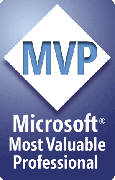Scenario: root top site collection for My Site web application got deleted (don’t ask how :-).
All my sites are still in tact as each of them is a separate site collection on it’s own, but if the top site collection under /">http://<mysitesURL>/ is deleted then people will not be able to create new my sites, this root site collection servers as provisioning mechanism for new MySites and also hosts Person.aspx page where end-users can view other people profiles.
So some of the things that you will notice right away:
1. No new My Sites can be created, instead people are getting “Internet Explorer cannot display the webpage”.
2. When people search result set is displayed, clicking on the person’s link to profile will bring to the “Internet Explorer cannot display the webpage” as well.
3. Your SharePoint search will not crawl people profiles anymore. This is because the top level site collection does not exist.
At this point you can recreate this mysite root site collection from Central administration under my sites web application, but only if you have the option to recreate it in the root. If you don’t have this option (I did not), you might have to recreate the whole web app, but backup all existing “my sites” firsts. For the first site collection that you will create use “My sites host” template under “enterprise” tab. After this create a managed path named “Personal”.
After you have done all of this restore all "”Mysites” that you have created backups for but not under the root URL :-), under /pesonal">http://<mysites>/pesonal
And you should be all set.
Enjoy






